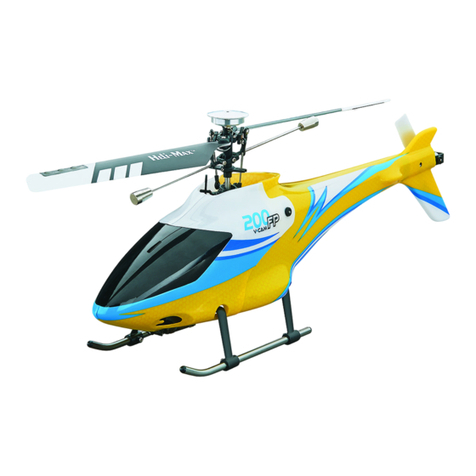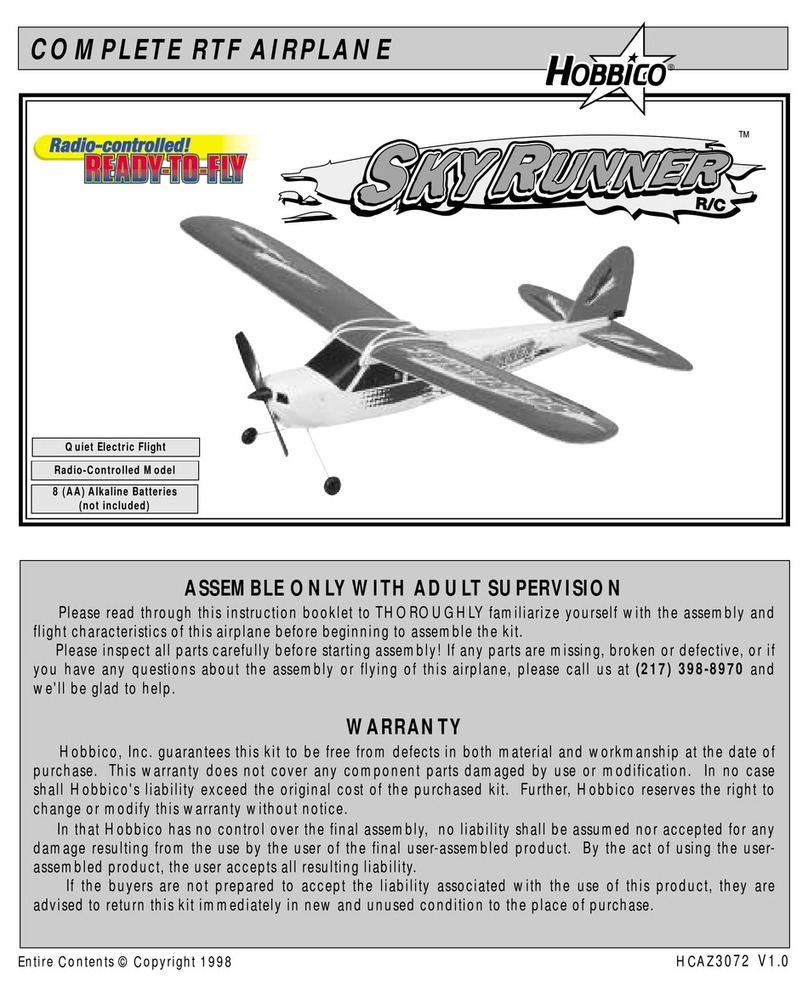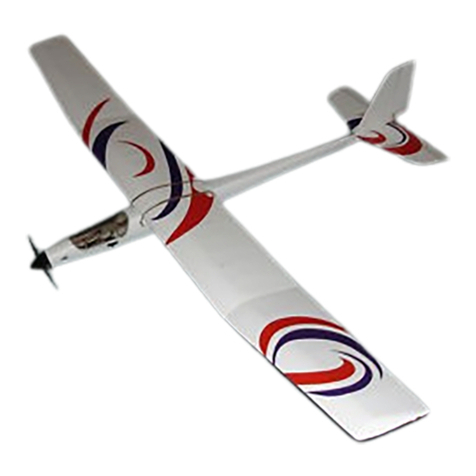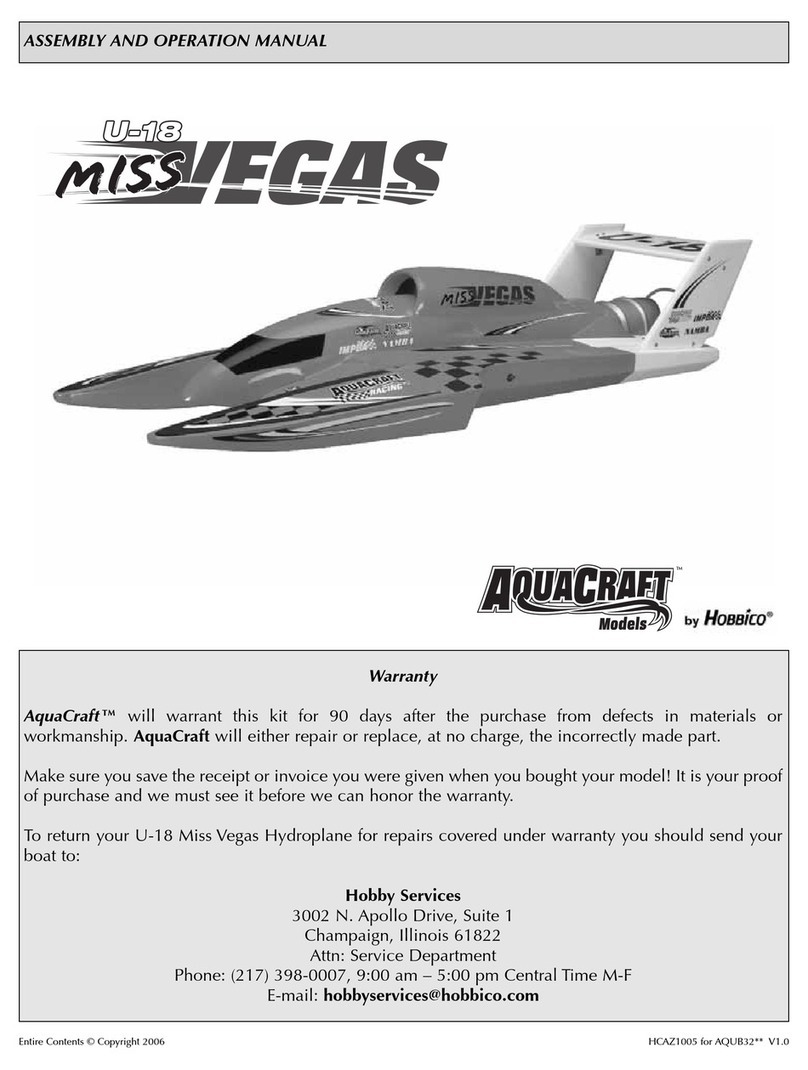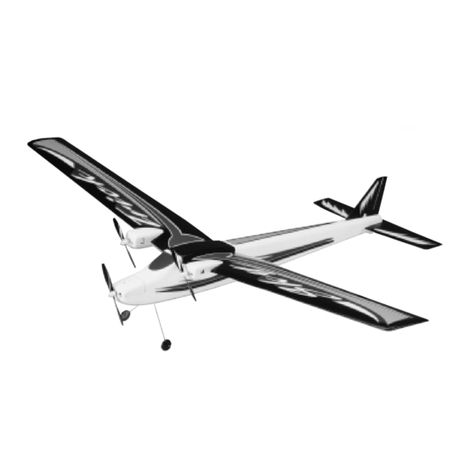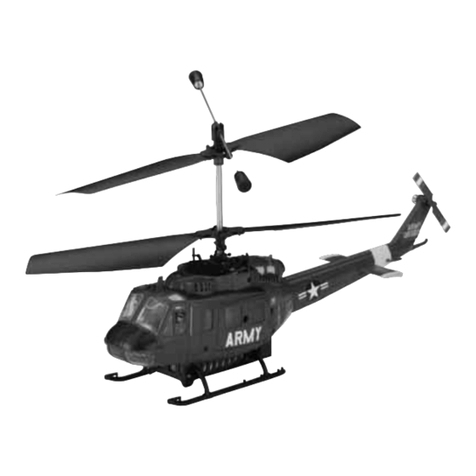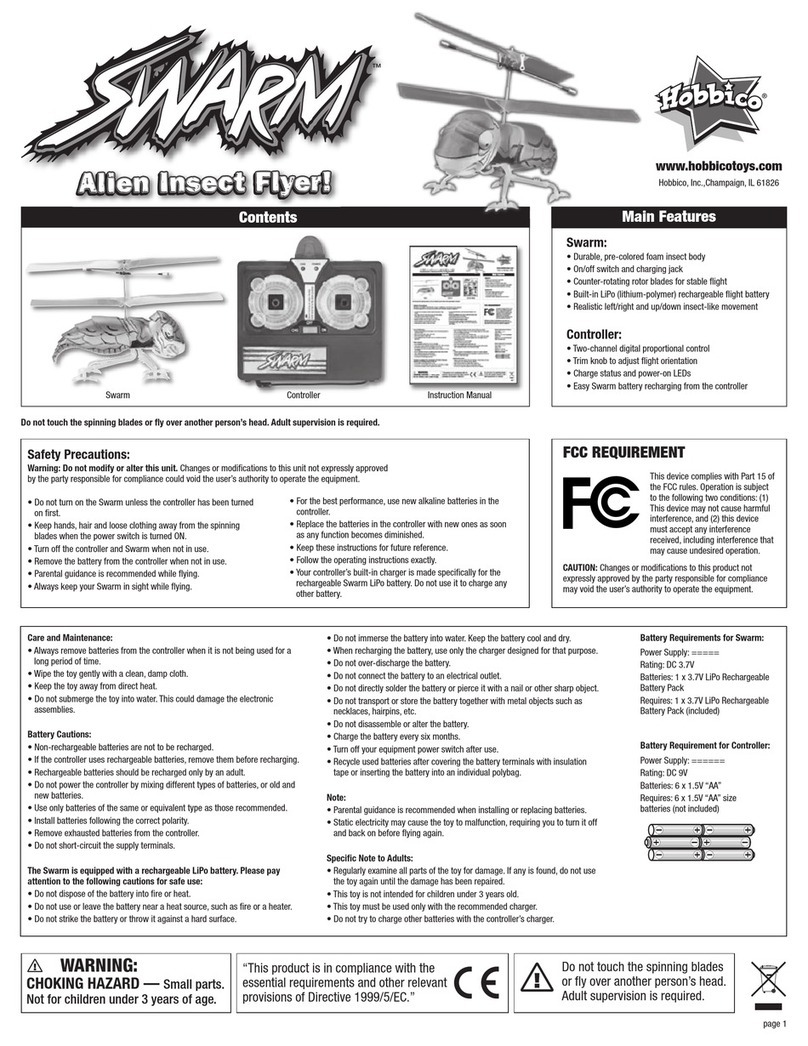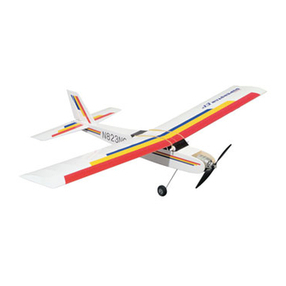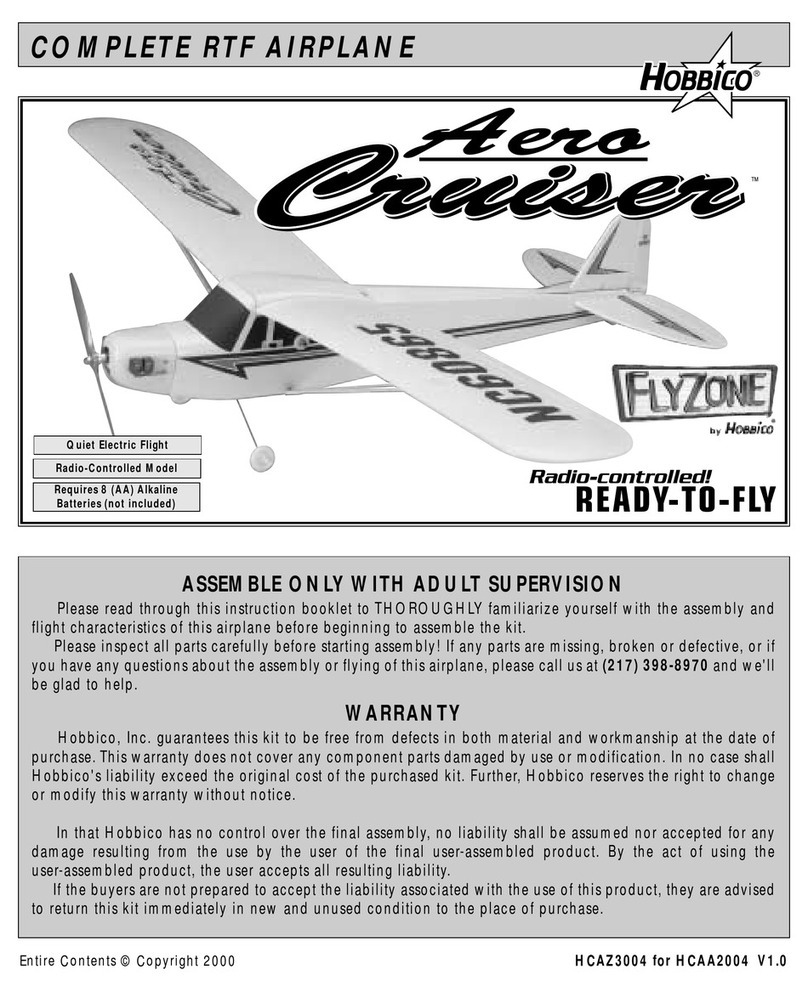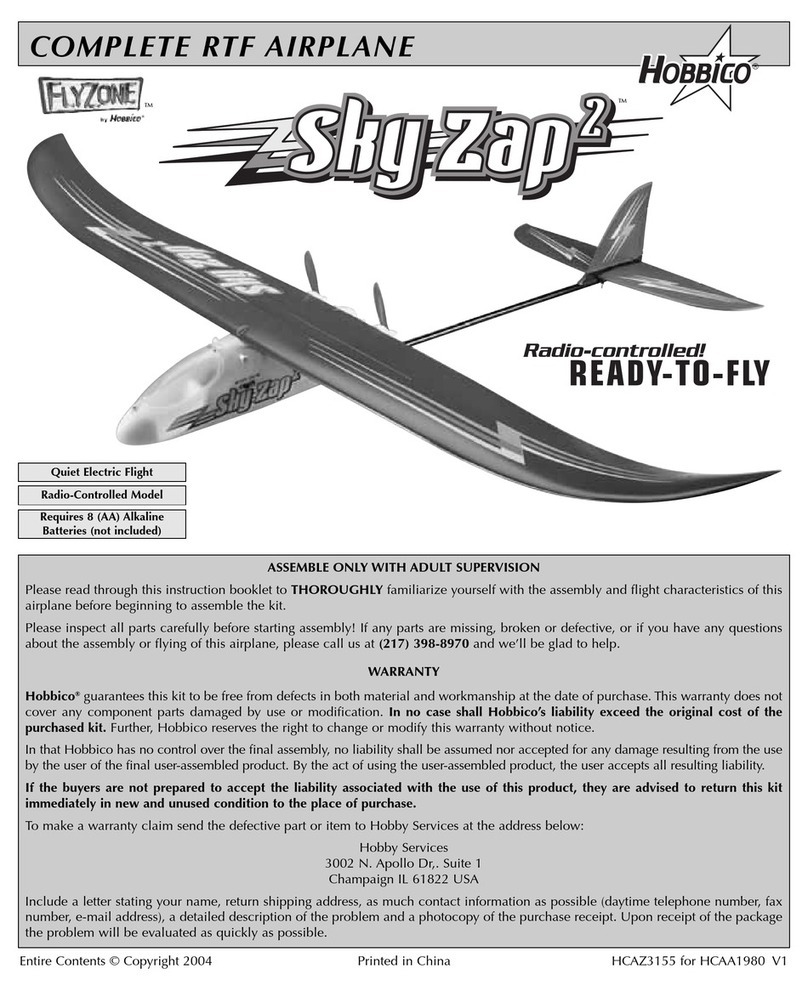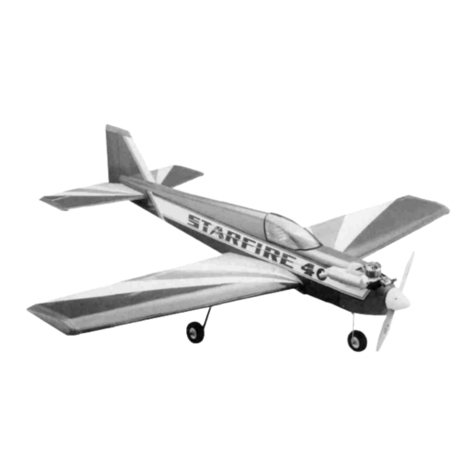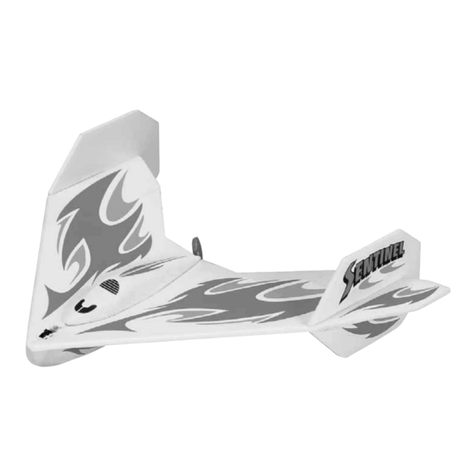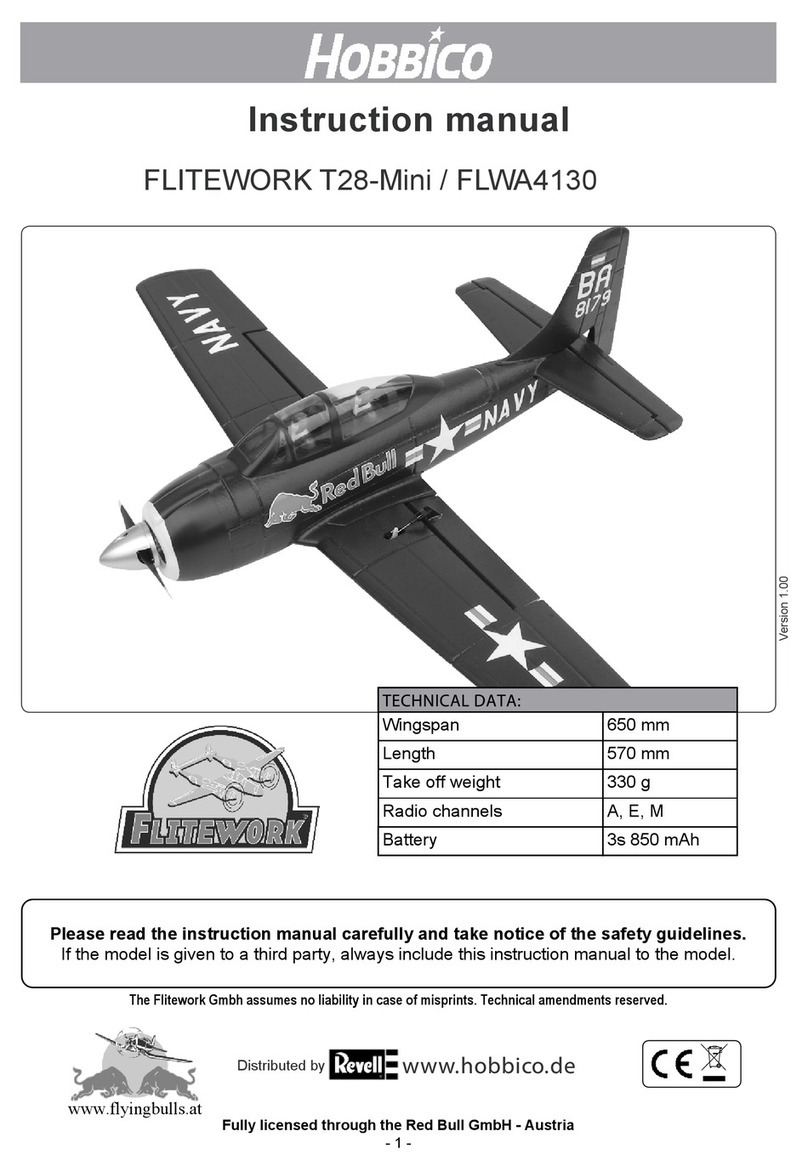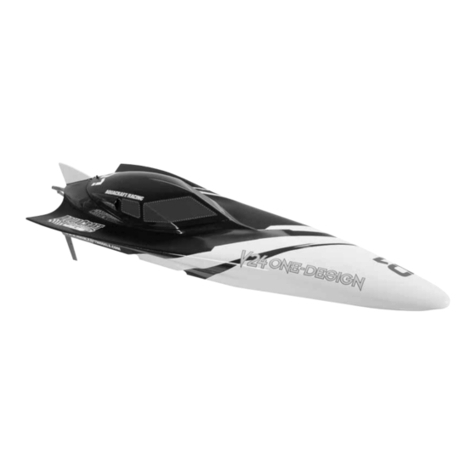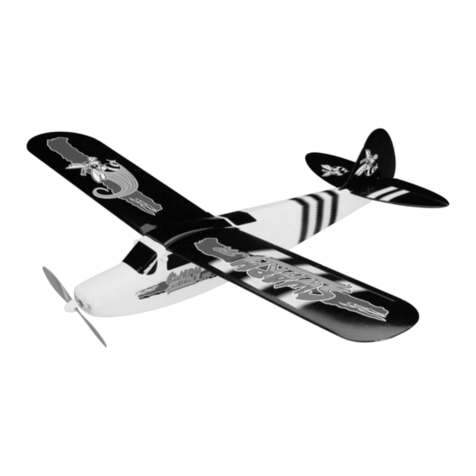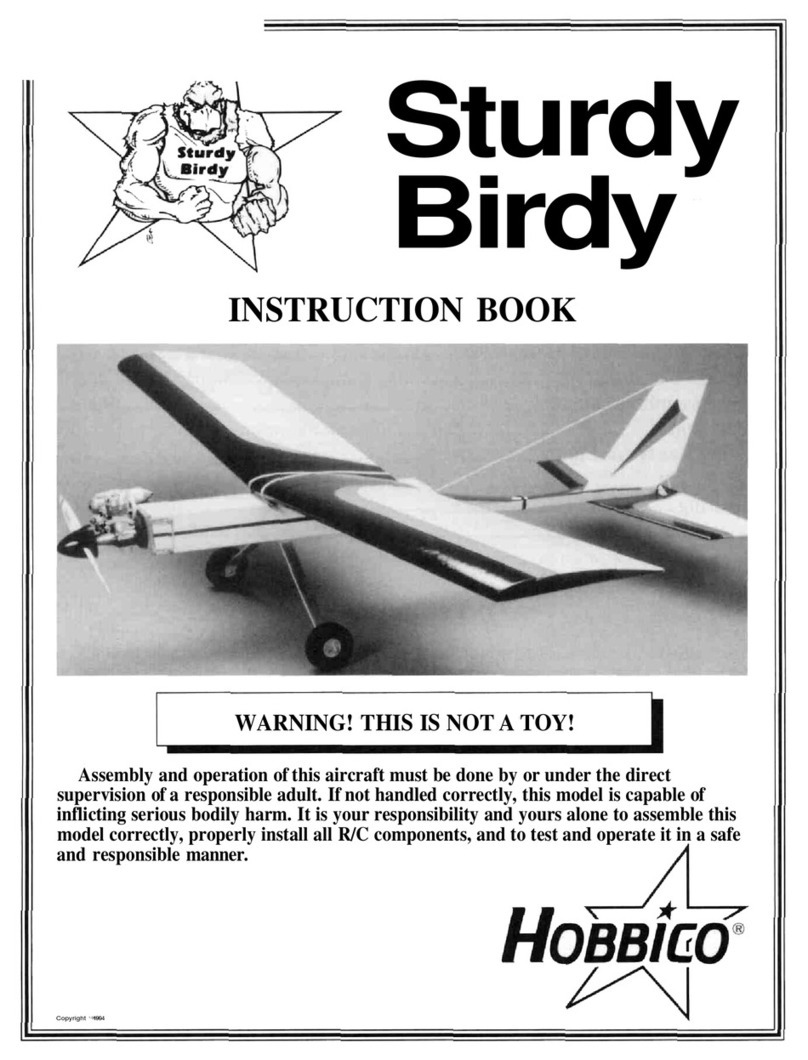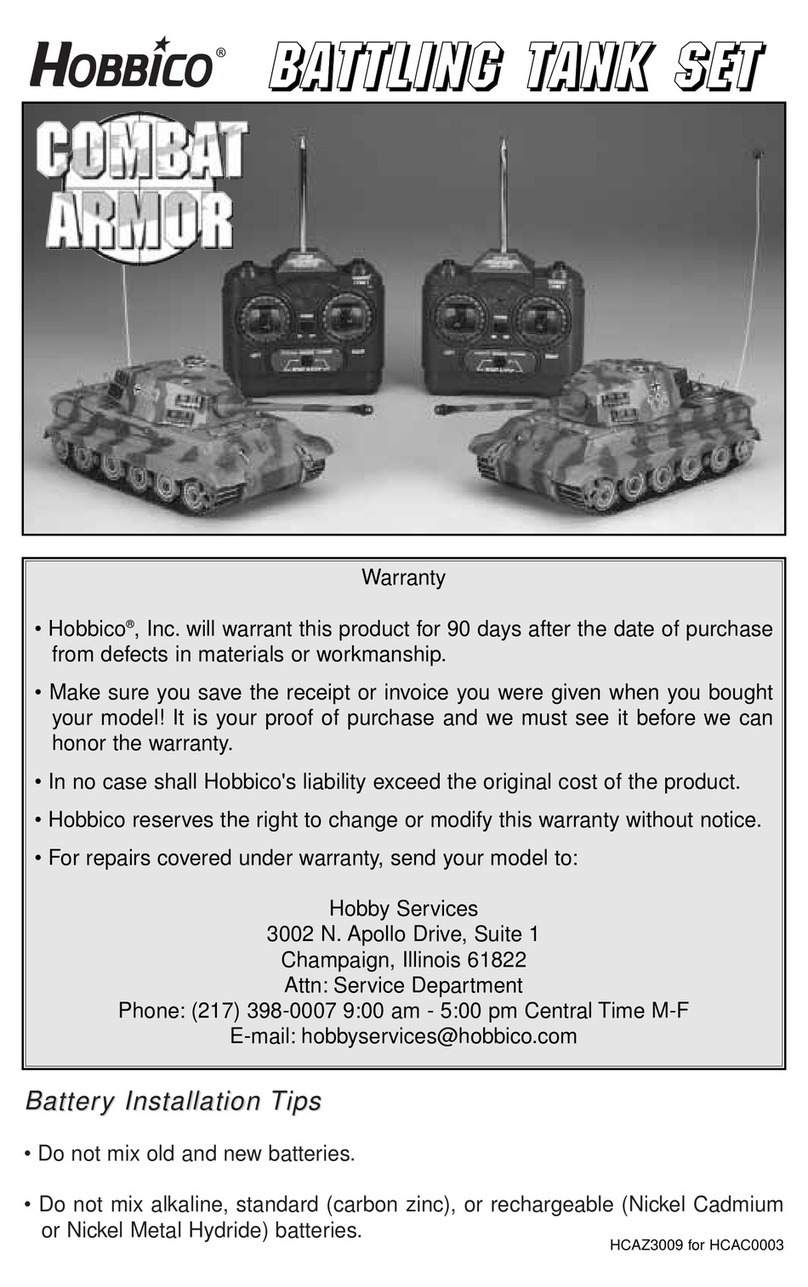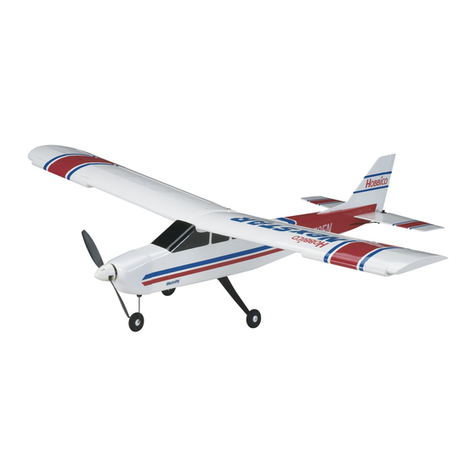
2
Congratulations on your purchase of the Hobbico Mini NexSTAR
EP RxR! The Mini NexSTAR EP follows the huge success of the
larger .46 glow engine NexSTAR Select, but now in a smaller park
flyer size. A powerful brushless outrunner motor, combined with
the latest lithium polymer battery technology, provides extended
flight times and quiet, clean electric flight. With an experienced
flight instructor by your side, the Mini NexSTAR EP can train you
to be a competent pilot in a minimum amount of time. As your
skill improves, the NexSTAR can be modified for faster and more
aerobatic flight.
For the latest technical updates or manual corrections to the Mini
NexSTAR EP visit the Hobbico web site at www.hobbico.com.
Open the “Airplanes” link, then select the Mini NexSTAR EP ARF.
If there is new technical information or changes to this model a
“tech notice” box will appear in the upper left corner of the page.
IMPORTANT
Once mastered, piloting a model aircraft can be one of the
most rewarding hobbies around. However, it cannot be stated
strongly enough that, if you do not already know how to fly an
R/C airplane, you will probably not be able to fly this model
by yourself. It may appear to be easy, but over-controlling and
disorientation quickly overcome inexperienced fliers, swiftly
ending their first flight. The best thing you can do to ensure
success is to find a flight instructor who will inspect your model
for airworthiness and provide flying lessons. If you haven’t
yet done so, contact the local hobby shop and ask them to
introduce you to an instructor or an R/C club representative.
If there is no club or experienced R/C pilot nearby, it would be
worth even a long drive to find one—if only for just a few flight
lessons (then you’ll have an idea of what to expect).
AMA
We urge you to join the AMA (Academy of Model Aeronautics)
and a local R/C club. The AMA is the governing body of model
aviation and membership is required to fly at AMA clubs. Though
joining the AMA provides many benefits, one of the primary
reasons to join is liability protection. Coverage is not limited to
flying at contests or on the club field. It even applies to flying at
public demonstrations and air shows. Failure to comply with the
Safety Code (excerpts printed in the back of the manual) may
endanger insurance coverage. Additionally, training programs
and instructors are available at AMA club sites to help you get
started the right way. There are over 2,500 AMA chartered clubs
across the country. Contact the AMA at the address or toll-free
phone number below:
Academy of Model Aeronautics
5151 East Memorial Drive
Muncie, IN 47302-9252
Tele. (800) 435-9262
Fax (765) 741-0057
www.modelaircraft.org
IMPORTANT!!! Two of the most important things you can do to
preserve the radio controlled aircraft hobby are to avoid flying near
full-scale aircraft and avoid flying near or over groups of people.
PROTECT YOUR MODEL,YOURSELF &
OTHERS...FOLLOW THESE IMPORTANT
SAFETY PRECAUTIONS
1. Your Mini NexSTAR EP should not be considered a toy, but
rather a sophisticated, working model that functions very much
like a full-size airplane. Because of its performance capabilities,
the Mini NexSTAR EP, if not assembled and operated correctly,
could possibly cause injury to yourself or spectators and damage
to property.
2.You must assemble the model according to the instructions.
Do not alter or modify the model, as doing so may result in an
unsafe or unflyable model. In a few cases the instructions may
differ slightly from the photos. In those instances the written
instructions should be considered as correct.
4.You must use an R/C radio system that is in first-class condition,
and a correctly sized receiver and battery.
5.You must correctly install all R/C and other components so that
the model operates correctly on the ground and in the air.
6. You must check the operation of the model before every flight
to insure that all equipment is operating and that the model has
remained structurally sound. Be sure to check clevises or other
connectors often and replace them if they show any signs of
wear or fatigue.
7. If you are not an experienced pilot or have not flown this type
of model before, we recommend that you get the assistance of
an experienced pilot in your R/C club for your first flights. If
you’re not a member of a club, your local hobby shop has
information about clubs in your area whose membership includes
experienced pilots.
We, as the kit manufacturer, provide you with a top quality,
thoroughly tested kit and instructions, but ultimately the quality
and flyability of your finished model depends on how you build
it; therefore, we cannot in any way guarantee the performance
of your completed model, and no representations are
expressed or implied as to the performance or safety of your
completed model.
